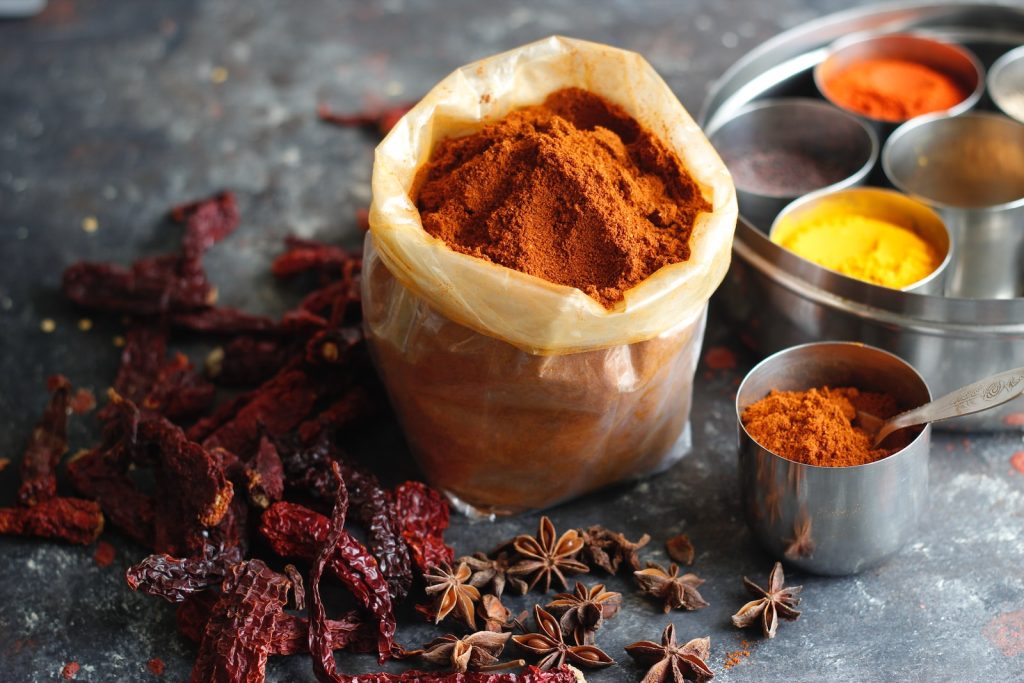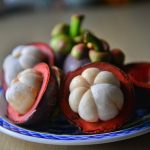The Origins and Diversity of Turmeric
Turmeric, known scientifically as Curcuma longa, is a vibrant plant belonging to the ginger family. Native to the Indian subcontinent and Southeast Asia, turmeric has thrived in these regions for thousands of years.
It grows best in temperatures between 20 to 30 degrees Celsius, requiring high annual rainfall to flourish. The plant’s rhizomes, the underground stems from which the rest of the plant grows, are the most sought-after part, used for propagation and consumption.
Turmeric’s story isn’t just about its origin; it’s also about its diversity. India boasts about 40 to 45 species of Curcuma, with Thailand following closely with 30 to 40 species.
Turmeric’s taxonomy is intriguing yet complex, with only specimens from South India being confidently identified as C. longa. The identity of other species and cultivars worldwide remains a subject of ongoing research.
Turmeric in Culinary Delights
Turmeric’s journey from the soil to the kitchen is a tale of flavor and color. Fresh or dried rhizomes are ground into a deep orange-yellow powder.
This powder is a staple in Asian cuisines, particularly in curries, imparting a warm, bitter, and earthy flavor. It’s not just the taste; turmeric adds vibrant color to dishes.
In India, a turmeric leaf is used in preparing special sweet dishes like patoleo, where rice flour and coconut-jaggery mixture are layered on the leaf, then steamed.
Turmeric is also a key ingredient in many products, from canned beverages to dairy products and sauces. Its presence in curry powders is pivotal, providing the iconic golden hue and robust flavor.
Turmeric’s Therapeutic and Medicinal Properties
Turmeric’s journey extends beyond the kitchen; it plays a significant role in traditional medicine. Curcumin, the bright yellow chemical turmeric produces, is the star here.
Despite its long use in Ayurvedic medicine, high-quality clinical evidence supporting turmeric’s effectiveness in treating diseases is still evolving.
Curcuminoids, the phenolic compounds in turmeric, give it its distinctive color. These compounds have shown potential health effects, including antioxidant properties.
However, translating these effects from lab studies to human health benefits remains challenging.
Nutritional Composition and Phytochemistry of Turmeric
Turmeric’s nutritional profile is as colorful as its appearance. It contains carbohydrates, proteins, fats, minerals, essential oils, dietary fiber, and curcuminoids.
The golden yellow color of turmeric is primarily due to curcumin, which constitutes up to 3.14% of assayed commercial samples of turmeric powder.
The phytochemical components of turmeric include diarylheptanoids, a class comprising numerous curcuminoids like curcumin, demethoxycurcumin, and bisdemethoxycurcumin.
These components not only contribute to turmeric’s health benefits but also add to its complex flavor profile.
Cultural and Ritualistic Uses of Turmeric
Turmeric’s role in culture and rituals is as vibrant as its color. In Hindu traditions, turmeric paste is applied to the bride and groom as part of pre-wedding festivities.
In Tamil Nadu and Andhra Pradesh, dried turmeric tuber is used to create a Thali necklace, a part of the Tamil–Telugu marriage ritual.
In eastern India, turmeric is part of nabapatrika, used in weddings and other ceremonies. The Haldi ceremony, observed during wedding celebrations across the Indian subcontinent, is a notable example of turmeric’s cultural significance, symbolizing purity, fertility, and good luck.
Health Benefits and Possible Side Effects of Turmeric
Turmeric has been lauded for its health benefits. It helps treat various conditions, from arthritis to digestive disorders.
Curcumin, in particular, is thought to have anti-tumor and cancer-fighting properties. However, it’s important to remember that while turmeric is an anti-inflammatory, many of its health benefits have been proven only in lab settings or animals.
While turmeric is safe for most people, it’s crucial to be aware of potential side effects. Adverse reactions, mostly gastrointestinal, like nausea or abdominal pain, are usually mild and do not require additional treatment.
This safety extends to its use as a supplement, though interactions with other medications should always be considered.
Latest Research Findings on Turmeric
The recent surge in research surrounding turmeric, particularly curcumin, its primary active compound, reveals some promising yet complex findings. Here is a more detailed look, including a table and list to illustrate the key points:
1. Network Meta-Analysis on Anti-Tuberculosis Drug-Induced Liver Injury (Anti-TB DILI):
- Study Focus: Assessing the effectiveness of various interventions, including a combination of turmeric and Tinospora cordifolia extract, in preventing anti-TB DILI.
- Key Findings: This combination significantly reduced the occurrence of anti-TB DILI.
- Statistical Results: This intervention’s risk ratio (RR) was 0.07 with a 95% confidence interval (CI) from 0.02 to 0.28, indicating a substantial reduction compared to placebo.
2. Pairwise Meta-Analysis and SUCRA Rankings:
- These analyses further supported the efficacy of turmeric and Tinospora cordifolia extract.
- In SUCRA rankings, this combination stood at the top for preventing anti-TB DILI, outperforming other interventions like NAC and garlic tablets.
3. Challenges in Bioavailability of Curcumin:
- Curcumin’s large size and water insolubility pose absorption challenges.
- Research suggests that turmeric’s effectiveness might be due to its action on gut bacteria, bypassing the need for bloodstream absorption.
Table: Summary of Findings in Network Meta-Analysis
| Intervention | Risk Ratio (RR) | 95% Confidence Interval (CI) | Outcome |
|---|---|---|---|
| Turmeric + Tinospora cordifolia | 0.07 | 0.02 to 0.28 | Significantly lowered anti-TB DILI |
| N-acetylcysteine (NAC) | 0.09 | 0.01 to 0.75 | Lowered anti-TB DILI, but less effective |
| Garlic Tablets | Not significant | Not available | Inconclusive in reducing anti-TB DILI |
4. Translation to Human Applications:
- The quantities of turmeric required to replicate animal study effects are impractical for daily human consumption.
- Human clinical trials are needed for conclusive recommendations.
5. List of Research Challenges and Future Directions:
- Absorption and Bioavailability: How to increase curcumin’s absorption effectively.
- Dosage and Safety: Establishing safe and effective dosages for human consumption.
- Clinical Trials: Conducting more extensive human trials to validate animal study results.
- Long-Term Effects: Understanding the long-term implications of turmeric consumption.
- Mechanism of Action: Further research on how turmeric interacts with gut bacteria and its systemic effects.
In summary, while the recent research into turmeric, particularly in preventing anti-TB DILI, is encouraging, it highlights the complexities in transitioning from traditional use to clinically validated medicinal applications.
The data underscores the need for cautious optimism and further rigorous studies to understand turmeric’s full potential in human health.
Conclusion
Turmeric‘s journey from a humble plant to a revered spice and medicinal herb is a story of versatility and ongoing discovery.
Its uses span from adding flavor and color to dishes to potentially aiding health and wellness. Yet, the scientific journey to fully understand turmeric’s benefits continues.
For now, turmeric remains a cherished ingredient in kitchens and cultures worldwide, with a promise of more secrets to unveil in health and medicine.
“Turmeric has been used by humans for more than 4,000 years. As well as cooking and cosmetics, it’s been a staple of the traditional medicine practice of Ayurveda”.


